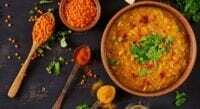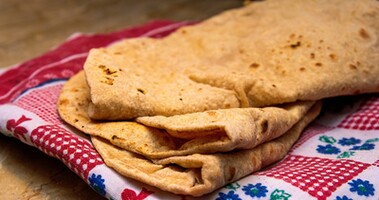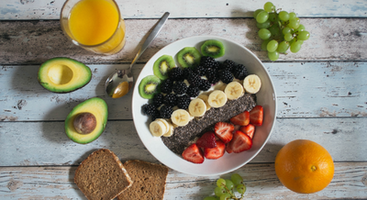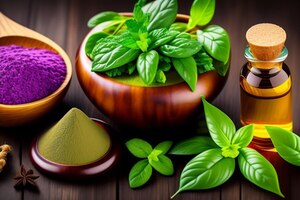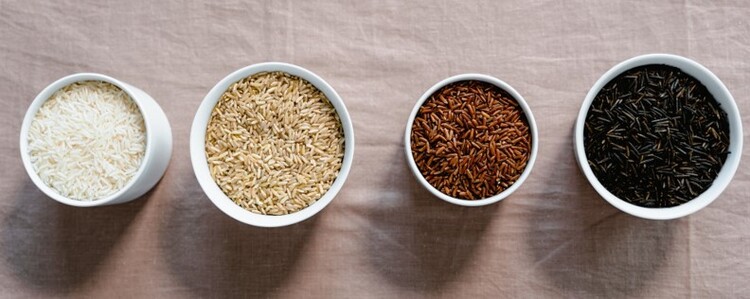
Pathya (wholesome) ahara (diet) recipes: Manda and Vilepi
By Vaidya Ahana
Classics of Ayurveda emphasize the consumption of suitable food in a particularly suitable season, as food is the most essential element to sustain a good life and if this is consumed inappropriately, it paves the way for disease manifestation.
The word pathyaahara refers to wholesome foods which possess all six tastes (sadrasa in Ayurveda)
- madhura (sweet)
- amla (sour)
- lavana (salty)
- katu (pungent)
- tikta (bitter)
- kasaya (astringent)
Including all of them in your diet has numerous health benefits while getting rid of diseases, provided you take into consideration the season and your digestive capacity before consumption.
Benefits of Healthy eating - Ayurvedic Balanced Diet
- Maintains good health
- Nourishes the entire body
- Provides a sense of steadiness and satisfaction
- Increases strength, intellect and overall immunity
- Stabilizes the tridoshas
- Relieves excessive hunger or thirst
When Should You Eat a Wholesome Diet?
Post therapeutic regimen:
After the body is cleansed from the morbidities, the patient is advised to consume pathya ahara to stabilize and strengthen the body. Each of the dietary items are advised to be consumed three or two or one times per day, based on the type of purification the person has undergone ( three type of purification - maximum or extreme purification, moderate purification and minimum purification)
For example:
- A person who has undergone moderate and minimum purificatory procedure, is advised to consume vilepi (thick gruel) on the second day during evening and morning hours respectively.
- A person who has undergone extreme purificatory procedure, is advised to consume vilepi on the third day during morning and evening hours.
- After Emesis therapy (vamana), the patient is asked to consumed manda (thin gruel) on the second and third day for three times a day.
It is also recommended to consume pathya ahara in cases of indigestion.
The Importance of Consuming a Balanced Diet
- After Panchakarma therapy is done, pathya ahara is indicated to stimulate the digestive fire (agni) and also to remove any complications if formed due to improper administration of therapy.
- Digestive power is purified in your body, hence to rejuvenate it and be capable of digesting all types of food, pathya ahara is indicated.
- If you feel weak or debilitated, to promote strength to your body
- Indigestion conditions
Foods that promote pathya and can be included in your everyday diet include:
Boiled rice, Mung beans, ghee, milk, honey, leafy vegetables, fleshy fruits, ginger, drink adequate amount of water, almonds, dates and figs.
Manda recipe: (thin gruel/liquid diet)
Dosha benefits: Vata, Pitta, Kapha (reduces and helps maintain balance in all the three doshas)
Ingredients:
- Rice - 1 cup
- Water - 14 cups
- Ginger powder - 1 tbs
- Salt to taste
Recipe:
- Wash rice grains thoroughly in water.
- Add rice grains and water in a clean vessel.
- Boil it in low flame till the rice is cooked and its smell is appreciated.
- Filter the preparation through a sieve or a clean filter cloth and collect only the liquid part of the preparation.
- This liquid part obtained is termed as 'manda', add ginger powder and salt to taste. Serve hot.
Ayurveda tip for thin gruel:
- During panchakarma treatment, manda is given after fasting, purgation, and internal oleation since it acts as rejuvenator
- You can consume manda in case of excessive thirst especially after internal oleation
- Acts as a good digestant.
Vilepi recipe: (thick gruel/semi-liquid diet)
Dosha benefits: Pitta Vata (reduces and stabilizes vitiated or increased pitta and vata)
Ingredients:
- Rice - 1 cup
- Water - 4 cups
- Trikatuchoorna - 1 tbs
- Salt to taste
Recipe:
- Wash rice grains thoroughly in water.
- Add the washed rice grains and the mentioned amount of water in a vessel.
- Boil the ingredients in low flame until the rice is completely cooked and attains thick gruel consistency (the cooked rice will have more portion of solid part and very less portion of liquid part)
- Collect the preparation in a bowl and add trikatuchoorna with salt to taste. Serve hot.
Ayurveda tips:
- Consume thick gruel according to 1/3rd capacity of your consumption.
- Thick gruel helps nourish and rejuvenate the body.
- It is good for your heart and delicious to taste, so you might as just try it out.
Note: The information in this article is intended for your educational use only and is not a substitute for professional medical advice, diagnosis, or treatment. Always seek the advice of your physician or other qualified health providers with any questions you may have regarding a medical condition and before undertaking any diet, supplement, fitness, or other health programs.


